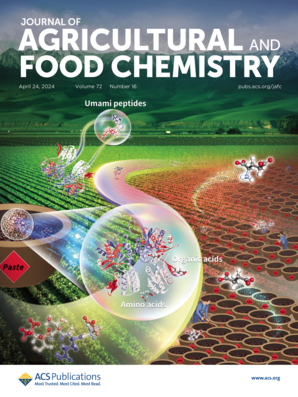Deciphering the Cross-Reactivity of Tropomyosin across Three Molluscan Species: Insights into the Role of Conserved T-Cell and B-Cell Epitopes
IF 5.7
1区 农林科学
Q1 AGRICULTURE, MULTIDISCIPLINARY
引用次数: 0
Abstract
Haliotis discus hannai tropomyosin (HTM), Alectryonella plicatula tropomyosin (ATM), and Mimachlamys nobilis tropomyosin (MTM) were reported as significant seafood allergens capable of eliciting severe allergic reactions. However, studies of cross-reactivity and epitope mapping among them are notably limited. This study discovered their cross-reactivity property through inhibition of IgG/IgE binding capacity and promotion of specific CD4+T-cell proliferation. For T-cell epitopes, 3, 4, and 3 epitopes were identified from the splenocytes of mice immunized with HTM, ATM, and MTM, respectively. In terms of B-cell epitopes, a combination of bioinformatics techniques and serological assays identified 4, 3, and 4 epitopes for HTM, ATM, and MTM, respectively. Sequence logo analysis revealed 2 conserved T-cell epitopes and 5 conserved B-cell epitopes, which may be critical for the observed cross-reactivity property. In conclusion, these findings provide crucial molecular evidence that could enhance the prevention of allergic reactions to aquatic mollusks.

求助全文
约1分钟内获得全文
求助全文
来源期刊
CiteScore
9.90
自引率
8.20%
发文量
1375
审稿时长
2.3 months
期刊介绍:
The Journal of Agricultural and Food Chemistry publishes high-quality, cutting edge original research representing complete studies and research advances dealing with the chemistry and biochemistry of agriculture and food. The Journal also encourages papers with chemistry and/or biochemistry as a major component combined with biological/sensory/nutritional/toxicological evaluation related to agriculture and/or food.

 求助内容:
求助内容: 应助结果提醒方式:
应助结果提醒方式:


